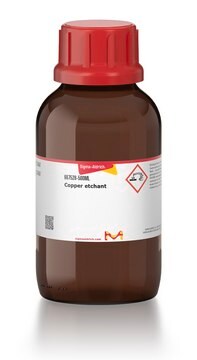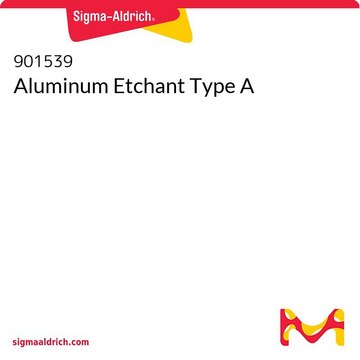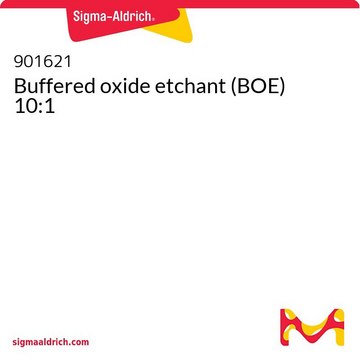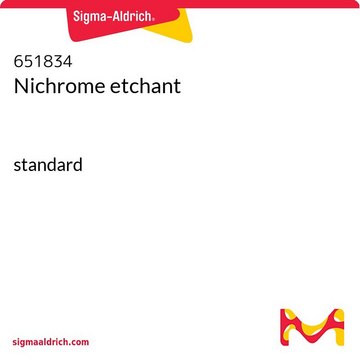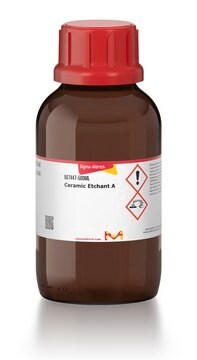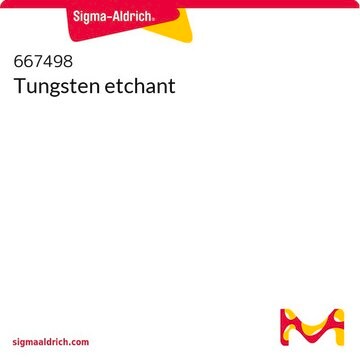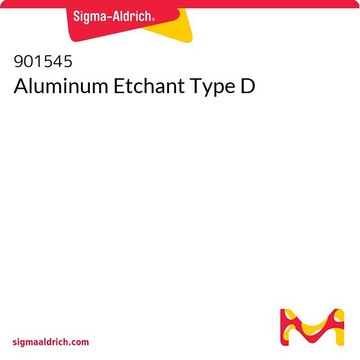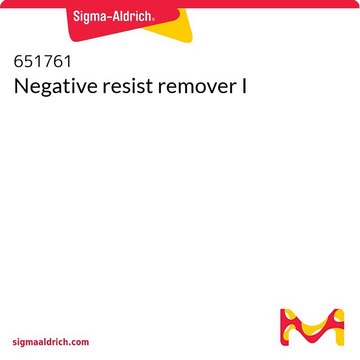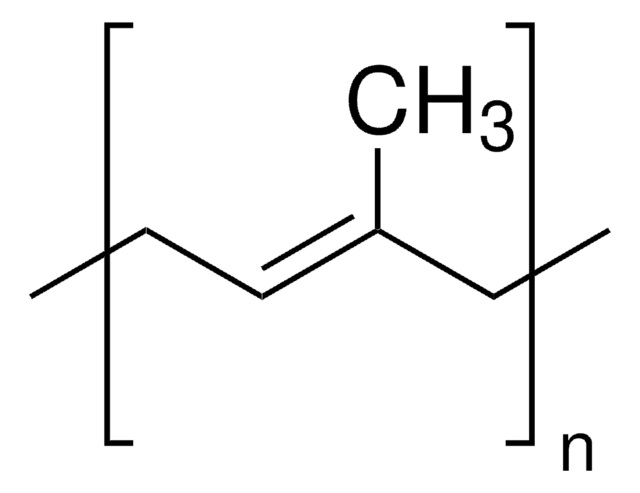Wichtige Dokumente
651826
Chrom-Ätzmittel
standard
Synonym(e):
Cr etching solution
About This Item
Empfohlene Produkte
Qualität
standard
Zusammensetzung
volatiles, 85%
Farbe
orange
bp
100 °C/1 atm
Dichte
1.16 g/mL at 25 °C
Allgemeine Beschreibung
- Appearance - Clear orange
- pH - Acidic
- Etch Rate at 40 °C - 40 Å/second
- Etch Capacity (rate declines at ~70%) - 65 g/gallon
- Shelf Life - 1 year
- Storage Conditions - Ambient
- Filtration - 0.2 µm
- Recommended Operating Temperatures - 20-80 °C (30-40 °C most common)
- Rinse - Deionized water
- Photoresist Recommendations - KLT6000 Series, KLT 5300 Series, HARE SQT (SU-8 type), TRANSIST, or PKP -308PI
- Select Compatible Materials - Au, Ti, oxide, nitride, Si
- Select Incompatible Materials - Al, Ni, Cu, NiCr
- Compatible Plastics - HDPE, PP, PTFE, PFA, PVC
- Isotropy - Isotropic
- Incompatible Chemicals - Strong bases
Anwendung
Leistungsmerkmale und Vorteile
Signalwort
Danger
H-Sätze
Gefahreneinstufungen
Aquatic Chronic 2 - Eye Dam. 1 - Met. Corr. 1 - Ox. Liq. 2 - Skin Corr. 1B - Skin Sens. 1
Zusätzliche Gefahrenhinweise
Lagerklassenschlüssel
5.1B - Oxidizing hazardous materials
WGK
WGK 3
Flammpunkt (°F)
Not applicable
Flammpunkt (°C)
Not applicable
Hier finden Sie alle aktuellen Versionen:
Besitzen Sie dieses Produkt bereits?
In der Dokumentenbibliothek finden Sie die Dokumentation zu den Produkten, die Sie kürzlich erworben haben.
Kunden haben sich ebenfalls angesehen
Protokolle
Our photoresist kit was designed to have the necessary chemical components for each step in the lithographic process. The component materials are provided in pre-weighed quantities for your convenience. Etchants are available separately so that the proper etchant can be chosen for a variety of substrate choices.
Unser Team von Wissenschaftlern verfügt über Erfahrung in allen Forschungsbereichen einschließlich Life Science, Materialwissenschaften, chemischer Synthese, Chromatographie, Analytik und vielen mehr..
Setzen Sie sich mit dem technischen Dienst in Verbindung.
